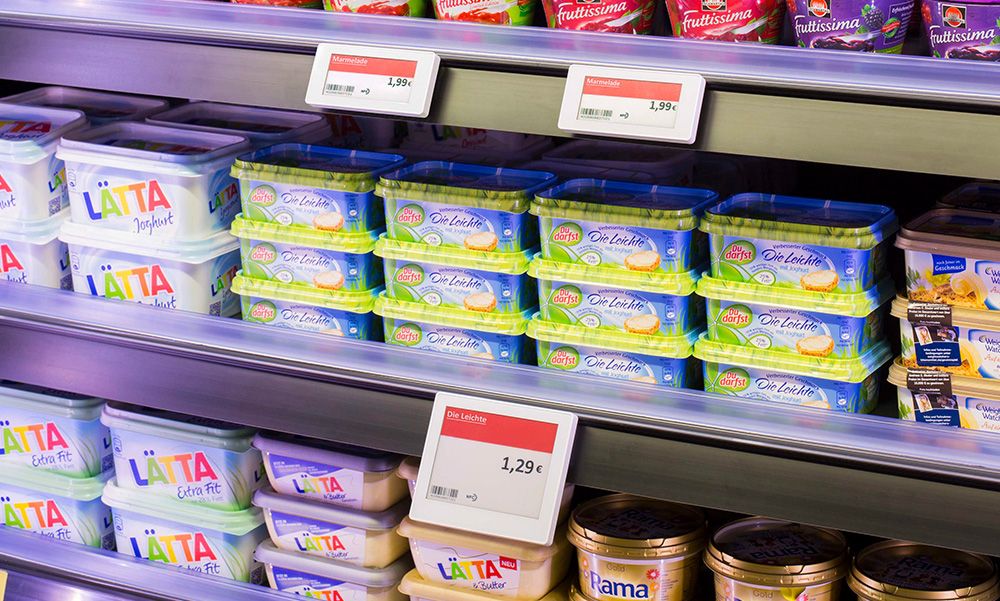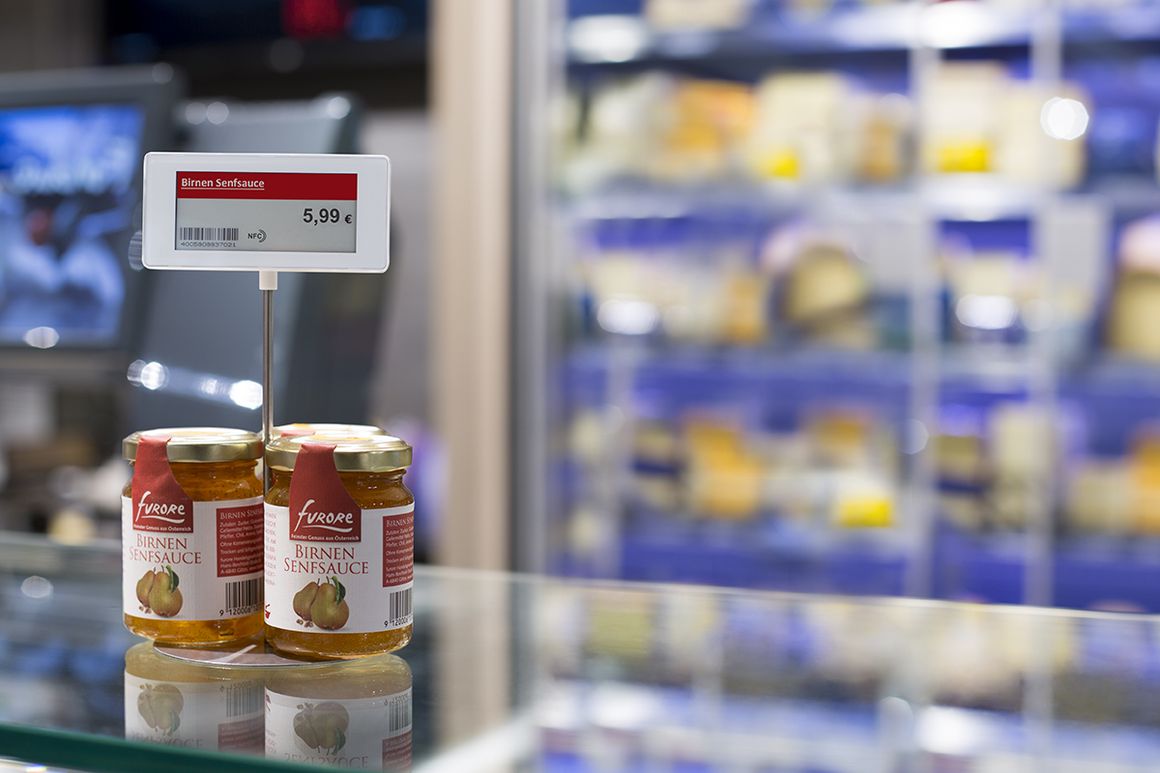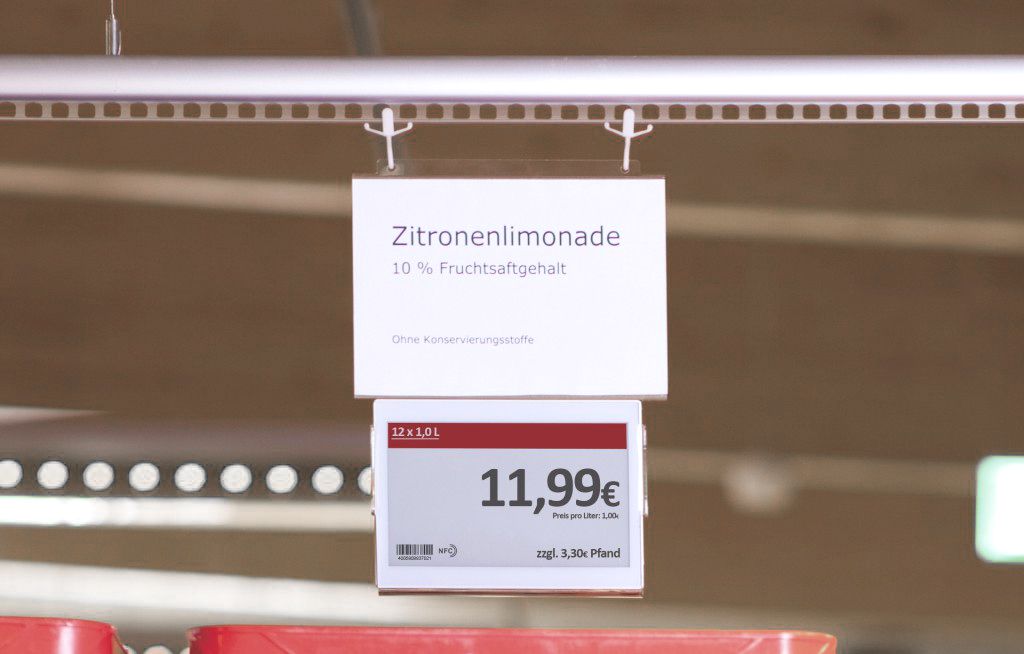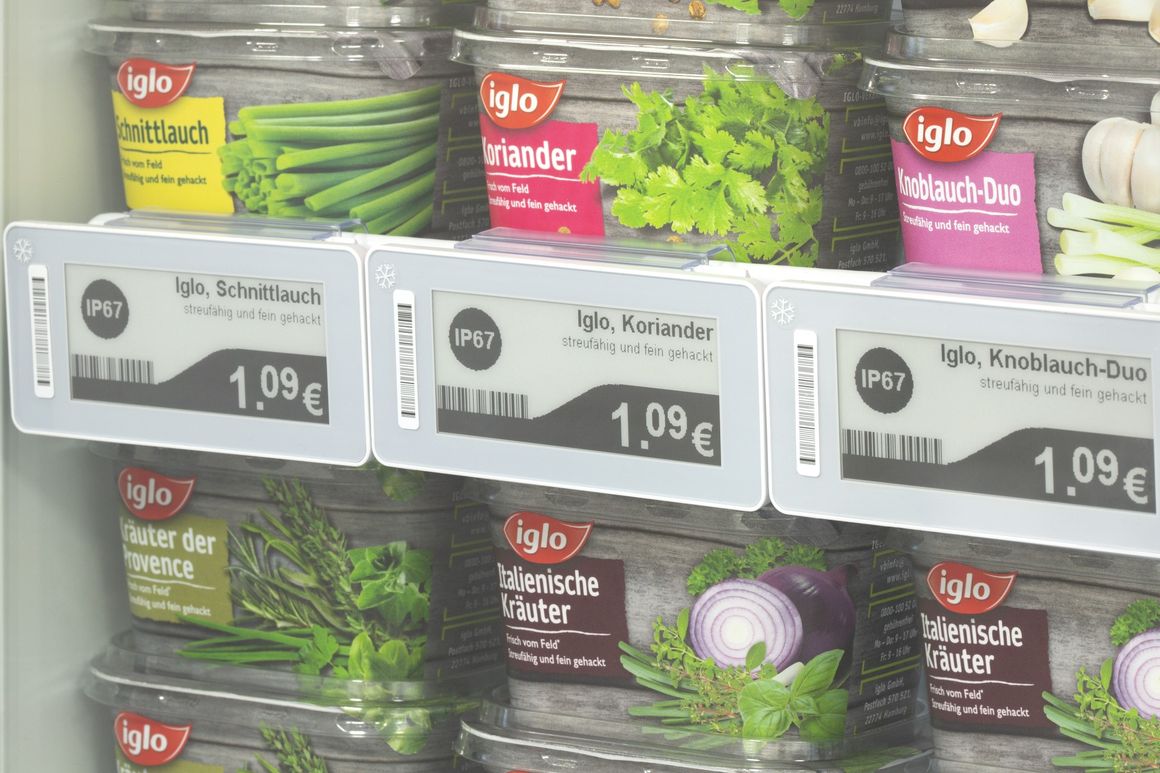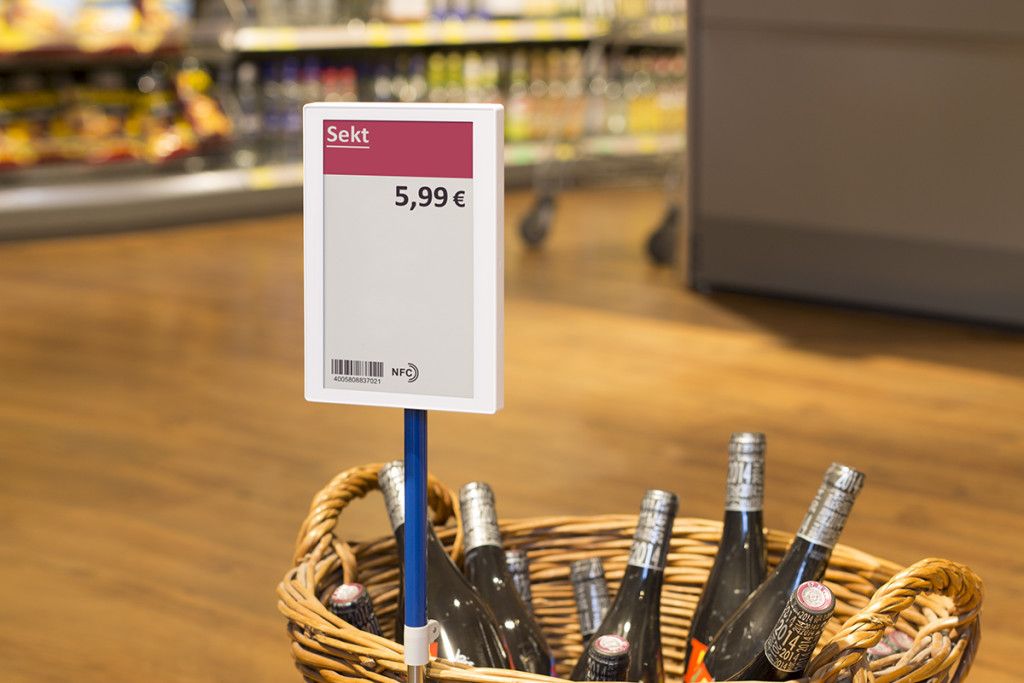Retail: When is it Worth Switching to Digital Price Tags?
18.09.2023
In today's digital era, technology has had a profound impact on almost all aspects of our lives, including retail. In the past, physical price tags were used to show customers the prices of products. Today, however, there is a new trend - the use of digital price boards. These electronic display boards offer numerous advantages over traditional signs, thus begging the question: when does it make sense to switch to digital price signs in retail?
Table of Contents
↓ The future of retail: Why digital price tags are indispensable
↓ Advantages of digital price tags
↓ Advantages and disadvantages of digital price tags at a glance
↓ When is it worth switching to digital price tags?
↓ The cost of digital price tags in retail: Worth the investment?
↓ The most important technical requirements for digital price labels at a glance
↓ Conclusion
↓ Frequently asked questions at a glance
The Future of Retail: Why Digital Price Tags are Indispensable
The answer to this question varies as it depends on different factors. The size of the retail shop is an important aspect. Large retailers with many products and frequently changing prices can benefit from digital price tags. These allow them to adjust prices in real time and save the time and cost of manually replacing tags.
The type of products also plays a role. In industries such as electronics or fashion, where prices need to be updated frequently, digital price tags can give retailers a distinct advantage. With the ability to react quickly to competitive offers or seasonal discounts, they can appeal to customers.
Customer experience is another important factor in choosing digital price tags. Not only do they provide a clear display of prices, but they can also show additional information. This allows customers to make more informed decisions and improves the shopping experience.
In addition, digital price tags allow for more efficient inventory management. Through integration with the inventory management system, stock can be monitored in real time and price changes can be made automatically. This helps to avoid overstocking and reduce the risk of losses from unsold goods.
However, it is important to note that there are costs associated with switching to digital price tags - both for the purchase of the technology and for training and maintenance. Therefore, retailers should carefully consider whether this investment will pay off in the long run, based on their specific business goals and requirements.
Advantages of Digital Price Tags
In retail, digital price tags offer numerous advantages, especially for larger shops with frequently changing prices and a variety of products. They allow for a high degree of flexibility. In recent years, the retail industry has undergone a profound transformation, mainly through the use of technology and digital solutions. One area that has been greatly affected by this development is in-store price tags.
Traditionally, price tags are changed and updated manually, which can be time-consuming and error-prone. Digital price tags allow prices to be updated quickly and accurately, and can be controlled centrally. This means customers always receive up-to-date information, which can lead to higher customer satisfaction.
Digital price tags also offer a high degree of flexibility in label design and customisation. Retailers can use different fonts, colours and layouts to attract customers' attention and strengthen their brand image. In addition, nutritional information, provenance information or customer reviews can be shown on the displays to enhance information delivery.
Digital price tags offer retailers the chance to present targeted attention-grabbing promotions. Animated content or changing images can be used to highlight special offers or new products to attract customers and increase sales.

ZV - The Classic
Battery Label in White

ZB - The Modern
Battery Label in Black

FB - The Colourful
4-colour up to multicolour

ZBB - The Versatile
Switchable via two buttons
Advantages and Disadvantages of Digital Price Tags at a Glance
- Signigicant time saving
- Fast processing of prices
- Immediate reaction to continuously changing market situations
- Uniform prices
- Dynamic adjustment of prices is possible depending on demand
- Reduction of costs
- More time for customer service
- Extensive product information can be integrated directly on the digital price tag via barcode or QR code
- Integrated LEDs on ESL from VARIO provide an optimal overview of the products - for you and the customers
- Marketing campaigns can be communicated quickly and easily via digital price tags
- Reduction of sources of error in price labelling
- The initial cost of digital price labels is usually higher than for conventional paper labels
- Digital price tags require a continuous power supply to operate
- The introduction of digital price tags may require staff training to operate and manage the new systems
- Digital price tags may be vulnerable to theft or damage
When is it Worth Switching to Digital Price Tags?
But when is it worthwhile for retailers to switch to digital price tags? This question is examined in more detail below. The advantages and disadvantages of digital price tags as well as the costs and technical requirements will be examined in order to provide retailers with a well-founded decision-making aid. Switching to digital price tags does not make sense for every retailer. There are a number of factors that retailers can consider to determine whether or not switching to digital price tags is worthwhile.
The use of digital price tags can increase efficiency and reduce costs for retailers who need to make regular price adjustments. This is especially true in the case of seasonal fluctuations, changing supplier prices or short-term special offers.
For retailers with multiple shops, centrally managing and updating prices via digital price tags offers the advantage of consistency and minimises logistical effort.
With an extensive product range, digital price tags can simplify labelling and information provision. Additional product information such as customer reviews or application tips improve the shopping experience and strengthen customer loyalty.
Retailers who want to be seen as innovative and technology-driven can further strengthen their brand image and differentiate themselves from competitors through the use of digital price tags.
The Cost of Digital Price Tags in Retail: Worth the Investment?
The initial cost of digital price labels varies depending on the manufacturer, size, display quality and additional features. In general, the prices per piece are higher than for conventional paper labels. Costs can range from a few euros to several dozen euros per tag. For a larger store setup, the total amount can be significant. It is important to compare offers and consider the needs of your own business.
Installing digital price signs usually requires technical expertise or working with a specialised service provider. There may be costs for mounting, wiring and integration with existing systems, which vary depending on the size of the facility and the complexity of the project.
Digital price signs require batteries to operate the displays. Operating costs depend on the technology used and frequency of updates, but are negligible compared to traditional labels.
It is important to consider ongoing maintenance and support costs with any technology investment. In the event of a defect or malfunction, the labels will need to be repaired or replaced. A support contract or warranty can reduce these costs.
When evaluating the cost of digital price signs, the long-term benefits should not be ignored. Increased efficiency, flexibility in pricing and targeted communication of marketing promotions can lead to cost savings and higher sales. Labour hours can be saved by reducing manual labelling and error rates.

The Most Important Technical Requirements for Digital Price Tags at a Glance
The technical requirements for digital price tags can vary from manufacturer to manufacturer and model to model. However, there are some aspects that need to be considered.
Digital price tags use different display technologies such as e-Ink (electronic paper) or LCD/LED. Retailers should weigh the pros and cons of these technologies and choose the one that best suits their needs.
To be able to update prices and information, digital price tags need to be connected to a central system or software platform. Stable connectivity via Wi-Fi or Ethernet is essential for this.
For digital price tags to function properly, they need a continuous power supply. Retailers should ensure that they have a reliable power source and, if necessary, invest in backup power sources such as UPSs (uninterruptible power supplies) to avoid power outages during power interruptions.
In addition, sufficient internal storage space is required to display price and product information even during temporary network interruptions.
A suitable management system or software for price and information management is indispensable for retailers. This should be user-friendly and allow for easy updates and synchronisation of data.
If retailers have multiple shops or want to expand, their digital price tags should be scalable. This means that the system can be easily expanded to support additional signs and allow for central management of all signs.
Finally, retailers should also consider the availability of maintenance and technical support for their digital price signs. A reliable support provider is important to be able to fix any problems quickly.
Conclusion
Investing in digital price tags can be beneficial for retailers to improve efficiency, flexibility and customer satisfaction. The technology offers numerous benefits such as real-time updates, design freedom, increased efficiency and marketing opportunities. However, retailers should carefully consider their individual needs and business objectives to determine whether the move to digital price tags will deliver the desired benefits. The future of retail is undoubtedly digitisation and digital price tags are a step in that direction.
It is important to carefully evaluate the costs of acquisition, installation, operation and maintenance. However, the long-term benefits of this technology should also be considered in the decision-making process. These technical requirements serve as a starting point for the selection of appropriate digital price tags. It is recommended that the specific requirements and recommendations of the manufacturer are considered and that experts or consultants are consulted as necessary to ensure that the chosen technology meets the needs of the retailer.
Frequently Asked Questions at a Glance
Electronic price labelling by means of digital price tags, also known as Electronic Shelf Label (ESL), offers flexibility and speed in retail. More and more conventional shelf labels, which are plugged or glued and located behind scanning machines, are being replaced by electronic displays. These can be easily controlled by hand scanner or wirelessly and allow for consistent processing and updating of prices. The updated prices are displayed within a few seconds.
The term "electronic price labelling" is the main term used. The terms digital price labels, electronic price labels and ESL are all synonyms and can be used interchangeably.
No! The electronic price labels can be used everywhere where product prices are changed regularly. Digital price labels can be used in a wide variety of areas.
A precise answer cannot be given, because the costs are made up of several factors. A small overview of factors that could effect the costs: the software required, the number of items that will be equipped with the price tags and specifically required functions.
The digital price tags offer flexibility for different shop sizes and allow some to highlight their products with integrated LED lights or visually link specific product categories.
Customers can also find the products and accessory items they want more easily with a click and the price tags light up.
Staff also benefit from this feature, as NFC technology allows them to easily switch displays via RFID chip after closing time and display additional information on the respective items.


